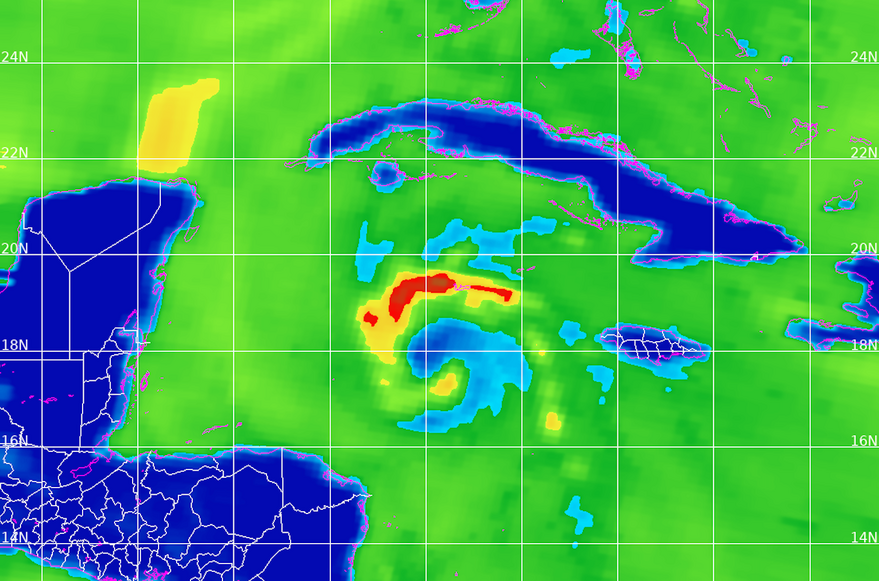SAN FRANCISCO – The launch of the next U.S. weather satellite is coming just in time to ensure the National Oceanic and Atmospheric Administration has two healthy spacecraft making observations from polar orbit.
NOAA is preparing to launch the Joint Polar Satellite System-2 on Nov. 1 from Vandenberg Space Force Base in California. The satellite, built and integrated by Northrop Grumman, will travel to low-Earth orbit on a United Launch Alliance Atlas 5 401 rocket.
Although the new satellite is called JPSS-2, it is the third satellite in the JPSS constellation. The first was Suomi National Polar-Orbiting Partnership satellite launched in October 2011. Suomi NPP was designed as a precursor for the joint NASA, NOAA, Defense Department National Polar-orbiting Operational Environmental Satellite System (NPOESS). Since NPOESS was cancelled, NPP was pressed into operational service.
After nearly 11 years, Suomi NPP is running low on fuel. It was launched with enough propellant to maintain its orbit for at least 10.5 years plus enough extra fuel to deorbit over the Pacific Ocean.
“We’re getting towards the end of that lifetime,” Tim Walsh, NOAA JPSS program director, said during an Oct. 4 press briefing. “We have to think of innovative ways to keep it in its desired orbit.”
Because the Suomi NPP instruments continue to function well, NOAA is considering options to extend its life, like allowing the satellite to drift in orbit.
First, though, the agency wants to ensure that JPSS-2 and its instruments built by Ball Aerospace, L3Harris Technologies, Northrop Grumman and Raytheon Technologies are functioning well. The JPSS-2 satellite, which will be renamed NOAA-21 in orbit, will gather observations in tandem with NOAA-20, which was known prior to reaching orbit as JPSS-1.
The benefit of having two satellites making observations in low-Earth orbit was demonstrated during Hurricane Ian.
NOAA 20 imagery showed two sides of the Category 4 Atlantic hurricane. In contrast, Suomi NPP captured an image “right down the center of the storm,” said Jordan Gerth, NOAA National Weather Service meteorologist. “It’s critical for our meteorologists to have the best view of the various storm systems.”
NASA has completed environmental testing of the JPSS-2 satellite and is integrating it with LOFTID, the Low-Earth Orbit Flight Test of an Inflatable Decelerator. LOFTID is flying as a secondary payload on the JPSS-2 launch to demonstrate the reentry technology.
“I’m happy to report that we have an observatory that’s well checked out and ready to be integrated on top of the launch vehicle,” said André Dress, JPSS flight project manager at the NASA Goddard Space Flight Center.
After launch, NASA will oversee the 90-day commissioning phase before handing over the satellite operations to NOAA.
Once commissioning is completed, NOAA-21 will circle the globe every 90 minutes, providing data for numerical weather models, observing storms, detecting fires and other environmental hazards, monitoring sea surface temperatures, spotting harmful algal blooms and measuring atmospheric ozone. The observations come from Ball Aerospace’s Ozone Mapping and Profiler Suite, the L3Harris Cross-track Infrared Sounder, Northrop Grumman’s Advanced Technology Microwave Sounder and Raytheon’s Visible Infrared Imaging Radiometer Suite.
JPSS-2 is equipped with many of the same instruments as NOAA-20. However, JPSS-2 does not include NASA’s Clouds and the Earth’s Radiant Energy System to provide information on Earth’s energy cycle.
JPSS also carries a different ozone-mapping instrument than NOAA-20. The ozone-mapping instrument on JPSS-2 is similar to the one on Suomi NPP.
The JPSS-2 launch will be United Launch Alliance’s final Atlas 5 flight from the West Coast. After takeoff, ULA will begin converting the Vandenberg’s Space Launch Complex-3, for the Vulcan Centaur rocket.
